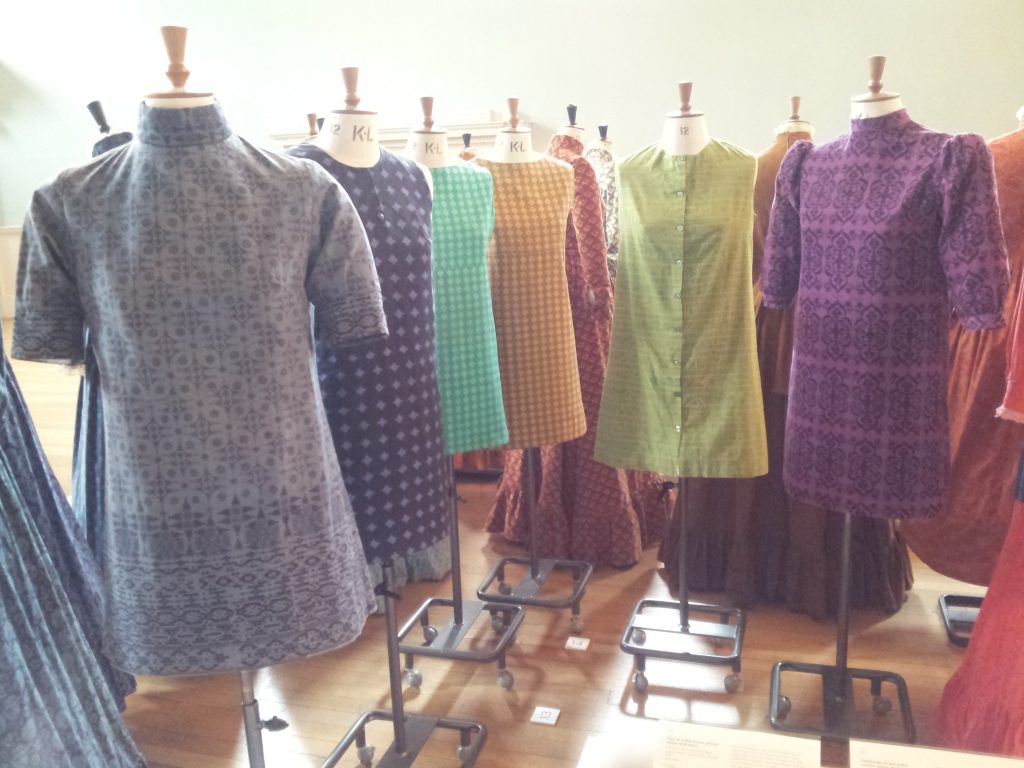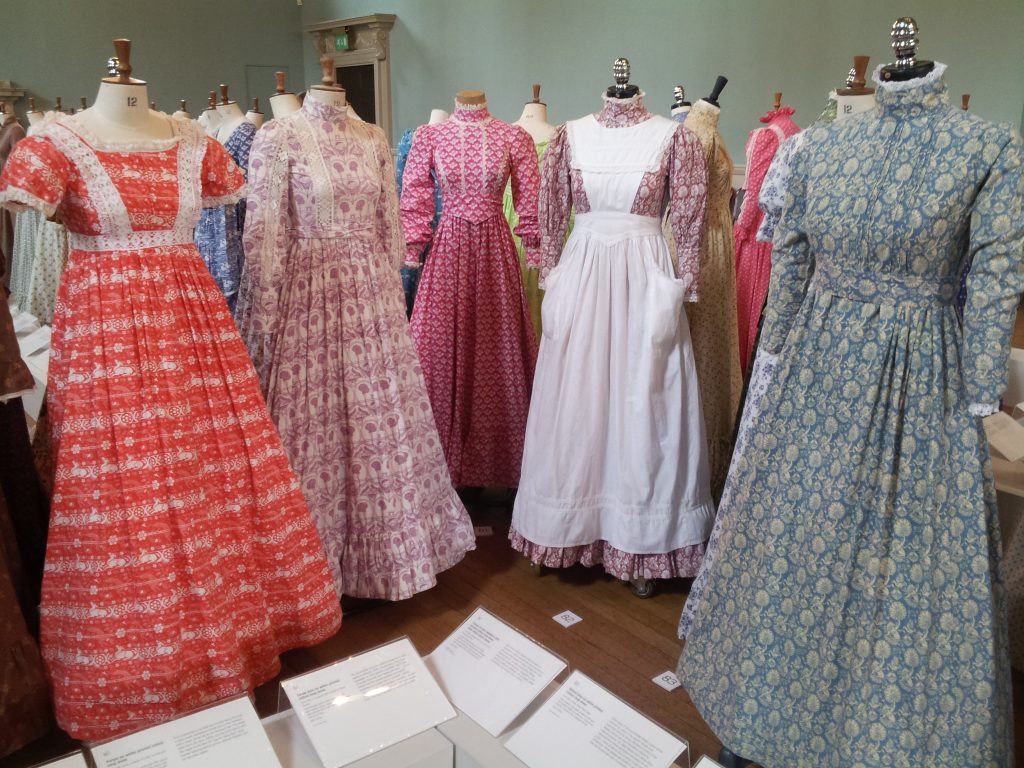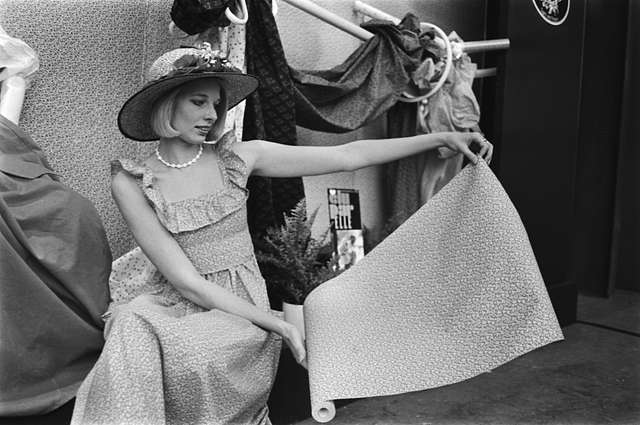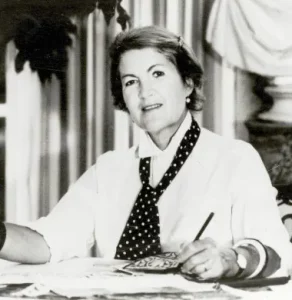Laura Ashley (1925-1985) was a Welsh fashion designer. Her brand was characterized by romantic designs, floral prints, a 19th-century rural feel and natural fabrics. If you were a woman growing up in the ’70s or ’80s, chances are you have a memory of coveting, wearing or living with something by the brand. It was both nostalgic and empowering.
Born in Dowlais, Merthyr Tydfil, Wales, and raised in London, Laura spent many holidays with her grandmother and great-aunts in Wales. There she experienced a strict Baptist household with polished brass fixtures and women with mending in their laps. “It was a world where neither moral values nor furniture had changed much in the previous 50 years,” Anne Sebba wrote in her 1990 biography, Laura Ashley a Life By Design.
She served in the Women’s Royal Naval Service during WWII. It was during this time that Laura met Bernard Ashley and the pair married in 1949.
While working as a secretary and raising her first two children, Ashley undertook some development work for the Women’s Institute on quilting. Seeing traditional handicrafts at the Victoria & Albert Museum, she was inspired to make printed fabric. When Ashley looked for small patches carrying Victorian designs to help her make patchworks, she found no such thing existed. Here was an opportunity: Revisiting the craft she had learned with her grandmother, she printed Victorian-style headscarves in 1953, largely because she and Bernard had just returned from a trip to Italy where young girls were emulating Audrey Hepburn’s character in Roman Holiday, knotting scarves around their necks.
Bernard printed them on a machine he had designed in their attic flat in London.
The scarves quickly became successful and Bernard left his city job to print fabrics full time. The company was originally registered as Ashley Mountney (Laura’s maiden name), but Bernard changed the name to ‘Laura Ashley’ because he felt a woman’s name was more in keeping with the style of products they were producing.
The new company moved to Kent in 1957 and set up a factory there in an old coach house. When the third of their four children was born, and after a devastating flood, the family moved to Wales in 1960.
Laura Ashley opened her first shop at 35 Maengwyn Street, Machynlleth, Montgomeryshire, in 1961. The family initially lived above the shop. Laura collaborated with a seamstress to create smock-like shirts and gardening smocks.
Eventually they moved again to Carno, and this is where the final roots of the company were planted.
With their high necks, full skirts, mutton sleeves and lace and ruffle adornments, these dresses, along with prim pin-tucked cotton blouses, lace-trimmed nightgowns and grosgrain-ribbon-tied hats, solidified the “Laura Ashley look.”

Mid-1960s printed cotton dress on display at the Fashion Museum, Bath, 2013

Mid-1970s printed cotton dresses exhibited at the Fashion Museum, Bath, 2013
All of this arrived, as though she’d planned it this way, in time to be the perfect antidote to ’60s-era mod shifts and synthetic fabrics. Many young hippies were rejecting the complications of urbanity in search of a simpler and more self-sufficient life. For all their implied conservatism, Laura Ashley dresses were also modern.
The 1970s was the brands’ golden era with its long, flowing dresses tapping into nostalgia for times gone by, evidenced by the popularity of the hit show Little House on the Prairie.
By the mid ’80s, the company was employing 4,000 people and taking in $130 million a year in revenue.
Princess Diana was always the brand’s most famous unofficial ambassador.
“Living quite remotely as I have done, I have not been caught up with city influences,” she once told an interviewer. “We just developed in our own way.”
The whole Ashley family became involved in the business, from fabrics to designing to photographing.
Laura tragically passed away in 1985, after falling down the stairs at her daughter’s home. She was 60.
The brand floundered without its leader, and with the rejection of busy prints and prettiness in ’90s fashion. This marked the beginning of the company’s demise and all stores in the U.S. had been closed by 2003.
The brand went into administration in 2020 and all remaining stores in the U.K. and Ireland closed. Ironically, the pandemic that began in early 2020 moved a lot of people to the countryside and into their homes, which lent itself well to the Laura Ashley Style.
The brand’s influence is visible today in nouveau prairie or cottagecore looks, possibly driven by the perilous state of the world! Who doesn’t want to wrap up in a quilted floral comforter, collapse on the couch and watch Little House on the Prairie right about now?
You can wear one of these pragmatic, pretty dresses in your escapist fantasies, but also in your actual life. Laura Ashley vintage dresses are closely coveted by vintage enthusiasts and seem to be ever-growing in popularity.

Model wearing an Ashley dress in 1976
Written by Síne McEllin of Ian Drummond Collection
